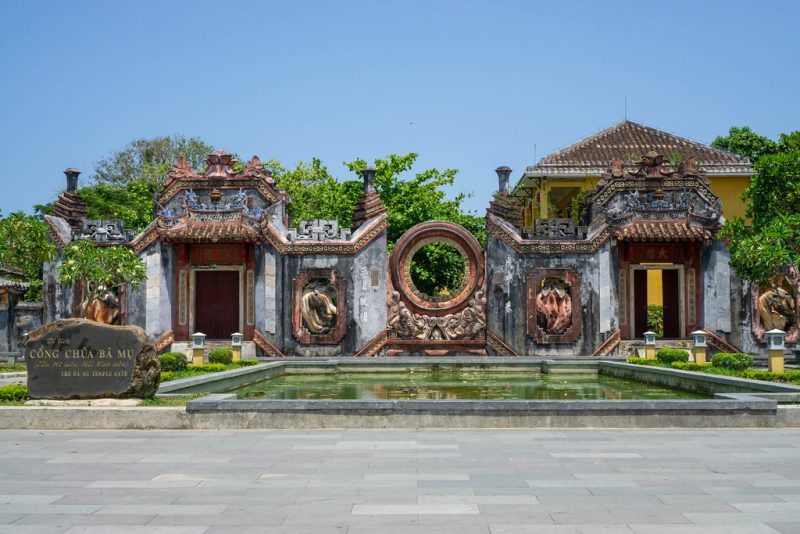Discovering The Ba Mu Temple Gate in Hoi An Ancient Town
The Ba Mu Temple Gate stands as a revered cultural landmark within the enchanting tapestry of Hoi An Ancient Town, Vietnam. Nestled amidst the town’s narrow, winding streets and vibrant architecture, this ornate gate serves as a portal to a bygone era, a testament to the rich historical and spiritual legacy that permeates the region. If you want to know more about The Ba Mu Temple Gate, let’s find out through under article below!
Why Call Ba Mu Temple Gate?
There are 2 terms that are often used: Pagoda and Temple. In other cultures, people may base the structure of a building to define a temple and pagoda. But in Vietnamese culture, that is based on the function and the purpose of a building to distinguish temples and pagodas. Here is a simple explanation:
A pagoda is a place to practice Buddhism.
A temple can be used to worship any Gods, Devines, or even human beings worshiped in a temple. That’s why this relic is called: “ Ba Mu Temple Gate” ( Ba Mu: Gods of fertility, Gods of birth).

The special structure of Ba Mu Temple Gate
Steeped in centuries of tradition, the Ba Mu Temple Gate is a manifestation of the town’s cultural fusion, blending influences from various periods, including Chinese and Japanese architectural elements. Number 3 has significant meaning in Eastern Asian culture. It has inspired the structure of traditional temples or houses. That is why we often see that most of the gates of temples in Vietnam or China have 3 entrances. This gate is often called the triple gate.
There is one theory that is famous in Eastern Asia culture, called the 3-Realm theory. This theory is about how ancient people viewed the relationship between humans and the Universal. They believe there are 3 realms in the cosmos: Heaven- Earth – Human. Heaven is the non-physical world for God and Divines. Earth is the physical world for humans and other creatures. Humans are the only creatures on Earth who can transcend or go beyond the physical world and come, and interact with God or Divine.

However, the gate at the Ba Mu Temple Gate is completely different. It is no longer number 3 anymore. There are 2 small entrances on the right, 2 small entrances on the left, and one big circle in the middle. One assumption to explain the change in this structure is that behind this gate, there are 2 temples, not one. Second, ancient people often associated the circle with the Sun, and the Sun with Heaven.The circle combines with 4 entrances creating 2 smaller triple gates representing Heaven -Earth- Human and Heaven- Earth- Human.
Entrance fee and opening time of Ba Mu Pagoda in Hoi An
For those who want to know overview information about opening hours and ticket prices to visit and check-in at the temple, here you can check:
- Address: 675 Hai Ba Trung Street, Hoi An
- Reference opening hours: All day
- Reference ticket price: Free
Conclusion
In conclusion, the Ba Mu Temple Gate stands as a testament to the rich cultural heritage and architectural prowess embedded in Hoi An Ancient Town. The preservation of the Ba Mu Temple Gate not only safeguards a tangible piece of Vietnam’s past but also invites contemplation on the enduring significance of cultural landmarks in shaping the identity of a community. In the heart of Hoi An, this gate whispers the stories of generations, echoing the resilience of a town that continues to honor its roots amidst the winds of change.





2 Comments